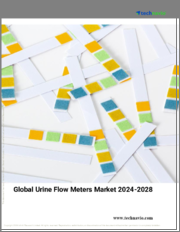
|
시장보고서
상품코드
1642640
요역동학 장비 시장 : 유형별, 용도별, 최종 사용자별, 지역별(2025-2033년)Urodynamic Equipment Market by Type, Application, End User, and Region 2025-2033 |
||||||
세계의 요역동학 장비 시장 규모는 2024년 3억 7,350만 달러에 달했습니다. IMARC Group은 향후 시장이 2033년까지 5억 6,580만 달러에 이를 전망이며, 2025년부터 2033년까지의 성장률(CAGR)은 4.49%가 될 것으로 예측했습니다. 비뇨기 질환의 유병률 증가, 노인 인구 증가, 무선 요역동학 장비의 채용은 시장을 견인하는 주요 요인 중 하나입니다.
요역동학 장비는 비뇨기 시스템의 기능을 평가하는 데 사용되는 특수 의료기기를 말합니다. 카테터 키트, 압력 변환기, 충전 펌프, 유량계, 컴퓨터화된 데이터 수집 시스템 등 여러 구성 요소로 구성됩니다. 압력, 부피, 유량 등 방광과 요도의 다양한 매개 변수를 측정하도록 설계되었습니다. 요역동학 장비는 요실금, 배뇨 기능 장애, 신경인성 방광, 간질성 방광염, 전립선 질환의 치료에 널리 사용됩니다. 요역동학 검사 장비는 배뇨 기능에 대한 상세하고 정확한 측정 정보를 제공하고 건강 관리 전문가가 질병을 조기 진단하고 충분한 정보를 기반으로 의사 결정을 내리고 적절한 치료법을 선택할 수 있도록 도와줍니다. 또한, 요역동학 장비는 환자의 편안함을 높이고, 임상 결과를 개선하고, 건강 관리 지출을 줄이고, 합병증의 위험을 최소화합니다.
요역동학 장비 시장 경향 :
요로 감염(UTI), 전립선 비대, 약물 요법, 건강에 해로운 라이프 스타일 등으로 인한 비뇨기과 질환의 유병률 증가는 시장 성장을 뒷받침하는 주요 요인 중 하나입니다. 요역동학 장비는 배뇨 기능 평가, 이상 식별, 방광 용량, 압력, 유량 측정에 널리 사용되며 다양한 질병의 진단과 근본 원인을 확인하는 데 도움이 됩니다. 이 외에도 수술, 약물 요법, 골반 체조 등 다양한 배뇨 치료의 효과를 평가하기 위해 장비가 널리 사용되는 것도 성장을 가속하는 요인이 되었습니다. 게다가 호르몬 변화, 요로근력 저하, 당뇨병, 고혈압, 심혈관질환(CVD) 등의 만성질환에 의해 비뇨기계 질환에 걸리기 쉬운 노인 인구가 증가하고 있는 것도 시장 성장에 탄력을 주고 있습니다. 이와는 별도로 암, 신장장애, 성기능장애 등 장래의 합병증을 예방하기 위한 비뇨기 질환의 조기 진단에 관한 대중의 의식의 고조가 시장 성장을 뒷받침하고 있습니다. 또한 휴대용, 소형, 경량, 원격 모니터링 기능을 제공하고 환자가 정기적으로 건강 관리 시설을 방문할 필요성을 제거하는 무선 역학 장비의 도입은 시장 성장에 긍정적인 영향을 미칩니다. 이 밖에 인공지능(AI)을 활용하여 진단의 정확성을 향상시키고 의료 종사자에 의한 맞춤형 치료 계획의 개척을 지원하는 것이 시장 성장에 좋은 영향을 미치고 있습니다. 또한, 환자에게 인센티브를 제공하고 고품질 치료 옵션에 대한 액세스를 제공하기 위한 지원적인 정부 정책의 이행은 시장 성장에 기여합니다. 헬스케어 산업의 급속한 확대, 광범위한 연구개발(R&D) 활동, 저침습(MI) 처치 수요 증가 등 기타 요인들도 시장 성장을 가속할 것으로 예측됩니다.
이 보고서에서 다루는 주요 질문
- 세계의 요역동학 장비 시장은 지금까지 어떻게 추이해 왔는가?
- 세계의 요역동학 장비 시장에서의 촉진요인, 억제요인 및 기회는 무엇인가?
- 각 촉진요인, 억제요인 및 기회가 세계의 요역동학 장비 시장에 미치는 영향은?
- 주요 지역 시장은?
- 가장 매력적인 요역동학 장비 시장은 어느 국가인가?
- 유형별 시장 내역은?
- 요역동학 장비 시장에서 가장 매력적인 유형은?
- 용도별 시장 내역은?
- 요역동학 장비 시장에서 가장 매력적인 용도는?
- 최종 사용자별 시장 내역은?
- 요역동학 장비 시장에서 가장 매력적인 최종 사용자는?
- 세계 요역동학 장비 시장의 경쟁 구도는?
- 세계의 요역동학 장비 시장에서 주요 기업은?
목차
제1장 서문
제2장 조사 범위 및 조사 방법
- 조사의 목적
- 이해관계자
- 데이터 소스
- 1차 정보
- 2차 정보
- 시장 추정
- 상향식 접근
- 하향식 접근
- 예측 조사 방법
제3장 주요 요약
제4장 서문
- 개요
- 주요 업계 동향
제5장 세계의 요역동학 장비 시장
- 시장 개요
- 시장 실적
- COVID-19의 영향
- 시장 예측
제6장 시장 내역 : 유형별
- 소변 유량 측정 장치
- 시장 동향
- 시장 예측
- 방광내압 측정
- 시장 동향
- 시장 예측
- 외래뇨 유동태 시스템
- 시장 동향
- 시장 예측
- 근전도
- 시장 동향
- 시장 예측
- 비디오 요역학 시스템
- 시장 동향
- 시장 예측
- 요역학적 소모품
- 시장 동향
- 시장 예측
제7장 시장 내역 : 용도별
- 신장 질환
- 시장 동향
- 시장 예측
- 암
- 시장 동향
- 시장 예측
- 기타
- 시장 동향
- 시장 예측
제8장 시장 내역 : 최종 사용자별
- 병원
- 시장 동향
- 시장 예측
- 외래센터
- 시장 동향
- 시장 예측
- 기타
- 시장 동향
- 시장 예측
제9장 시장 내역 : 지역별
- 북미
- 미국
- 캐나다
- 아시아태평양
- 중국
- 일본
- 인도
- 한국
- 호주
- 인도네시아
- 기타
- 유럽
- 독일
- 프랑스
- 영국
- 이탈리아
- 스페인
- 러시아
- 기타
- 라틴아메리카
- 브라질
- 멕시코
- 기타
- 중동 및 아프리카
- 시장 동향
- 시장 내역 : 국가별
- 시장 예측
제10장 촉진요인, 억제요인 및 기회
- 개요
- 성장 촉진요인
- 성장 억제요인
- 기회
제11장 밸류체인 분석
제12장 Porter's Five Forces 분석
- 개요
- 구매자의 협상력
- 공급기업의 협상력
- 경쟁도
- 신규 참가업체의 위협
- 대체품의 위협
제13장 가격 분석
제14장 경쟁 구도
- 시장 구조
- 주요 기업
- 주요 기업 프로파일
- Delta Med SpA
- Gemini Medical Technologies
- Laborie Inc.
- Medica SpA
- Medkonsult medical technology sro
- Neomedix Systems Pty. Ltd.
- Schippers Medizintechnik
The global urodynamic equipment market size reached USD 373.5 Million in 2024. Looking forward, IMARC Group expects the market to reach USD 565.8 Million by 2033, exhibiting a growth rate (CAGR) of 4.49% during 2025-2033. The increasing prevalence of urological disorders, the rising geriatric population, and the introduction of wireless urodynamic equipment represent some of the key factors driving the market.
Urodynamic equipment refers to a specialized medical device used to evaluate the functioning of the urinary system. It is comprised of several components, such as a catheterization kit, pressure transducer, filling pump, flow meter, and computerized data acquisition system. It is designed to measure various parameters of the bladder and the urethra, such as pressure, volume, and flow rate. Urodynamic equipment is widely used to treat urinary incontinence, voiding dysfunction, neurogenic bladder, interstitial cystitis, and prostate problems. It provides detailed, accurate, and measured information about urinary functions, which aids healthcare professionals in early disease diagnosis, making informed decisions, and selecting appropriate treatment options. Urodynamic equipment also enhances patients' comfort, improves clinical outcomes, reduces healthcare expenditure, and minimizes the risk of complications.
Urodynamic Equipment Market Trends:
The increasing prevalence of urological disorders due to urinary tract infections (UTIs), enlarged prostates, medications, and unhealthy lifestyles is one of the primary factors providing a thrust to the market growth. Urodynamic equipment is widely used to assess urinary function, identify abnormalities, and measure bladder capacity, pressure, and flow rate to diagnose various diseases and identify underlying causes. In addition to this, the widespread equipment utilization to evaluate the effectiveness of different urinary treatments, such as surgery, medications, and pelvic exercises, is acting as another growth-inducing factor. Furthermore, the rising geriatric population with high susceptibility to urological diseases, owing to hormonal changes, weak urinary tract muscles, and chronic conditions, such as diabetes, hypertension, and cardiovascular diseases (CVDs), is providing an impetus to the market growth. Apart from this, the increasing awareness among the masses regarding early diagnosis of urinary disorders to prevent future complications, such as cancer, kidney damage, and sexual dysfunction, is propelling the market growth. Additionally, the introduction of wireless urodynamic equipment, which is portable, compact, lightweight, provides remote monitoring capabilities, and eliminates the need for patients to visit healthcare facilities regularly, is positively influencing the market growth. Besides this, the utilization of artificial intelligence (AI) to improve the accuracy of diagnoses and aid healthcare professionals in developing personalized treatment plans is favoring the market growth. Moreover, the implementation of supportive government policies to incentivize patients and provides access to high-quality treatment options are contributing to the market growth. Other factors, including rapid expansion of the healthcare industry, extensive research and development (R&D) activities, and the growing demand for minimally invasive (MI) procedures, are anticipated to drive the market growth.
Key Market Segmentation:
Type Insights:
- Uroflowmetry Equipment
- Cystometry
- Ambulatory Urodynamic Systems
- Electromyographs
- Video Urodynamic Systems
- Urodynamic Consumables
Application Insights:
- Kidney Diseases
- Cancer
- Others
End User Insights:
- Hospitals
- Ambulatory Centers
- Others
Regional Insights:
- North America
- United States
- Canada
- Asia Pacific
- China
- Japan
- India
- South Korea
- Australia
- Indonesia
- Others
- Europe
- Germany
- France
- United Kingdom
- Italy
- Spain
- Russia
- Others
- Latin America
- Brazil
- Mexico
- Others
- Middle East and Africa
- The report has also provided a comprehensive analysis of all the major regional markets, which include North America (the United States and Canada); Asia Pacific (China, Japan, India, South Korea, Australia, Indonesia, and others); Europe (Germany, France, the United Kingdom, Italy, Spain, Russia, and others); Latin America (Brazil, Mexico, and others); and the Middle East and Africa. According to the report, North America was the largest market for urodynamic equipment. Some of the factors driving the North America urodynamic equipment market included the rising prevalence of urological disorders, the implementation of various government initiatives, and rapid technological advancements.
Competitive Landscape:
- The report has also provided a comprehensive analysis of the competitive landscape in the global urodynamic equipment market. Competitive analysis such as market structure, market share by key players, player positioning, top winning strategies, competitive dashboard, and company evaluation quadrant has been covered in the report. Also, detailed profiles of all major companies have been provided. Some of the companies covered include Delta Med S.p.A., Gemini Medical Technologies, Laborie Inc., Medica SpA, Medkonsult medical technology s.r.o., Neomedix Systems Pty. Ltd., Schippers Medizintechnik, etc. Kindly note that this only represents a partial list of companies, and the complete list has been provided in the report.
Key Questions Answered in This Report:
- How has the global urodynamic equipment market performed so far, and how will it perform in the coming years?
- What are the drivers, restraints, and opportunities in the global urodynamic equipment market?
- What is the impact of each driver, restraint, and opportunity on the global urodynamic equipment market?
- What are the key regional markets?
- Which countries represent the most attractive urodynamic equipment market?
- What is the breakup of the market based on the type?
- Which is the most attractive type in the urodynamic equipment market?
- What is the breakup of the market based on the application?
- Which is the most attractive application in the urodynamic equipment market?
- What is the breakup of the market based on end user?
- Which is the most attractive end user in the urodynamic equipment market?
- What is the competitive structure of the global urodynamic equipment market?
- Who are the key players/companies in the global urodynamic equipment market?
Table of Contents
1 Preface
2 Scope and Methodology
- 2.1 Objectives of the Study
- 2.2 Stakeholders
- 2.3 Data Sources
- 2.3.1 Primary Sources
- 2.3.2 Secondary Sources
- 2.4 Market Estimation
- 2.4.1 Bottom-Up Approach
- 2.4.2 Top-Down Approach
- 2.5 Forecasting Methodology
3 Executive Summary
4 Introduction
- 4.1 Overview
- 4.2 Key Industry Trends
5 Global Urodynamic Equipment Market
- 5.1 Market Overview
- 5.2 Market Performance
- 5.3 Impact of COVID-19
- 5.4 Market Forecast
6 Market Breakup by Type
- 6.1 Uroflowmetry Equipment
- 6.1.1 Market Trends
- 6.1.2 Market Forecast
- 6.2 Cystometry
- 6.2.1 Market Trends
- 6.2.2 Market Forecast
- 6.3 Ambulatory Urodynamic Systems
- 6.3.1 Market Trends
- 6.3.2 Market Forecast
- 6.4 Electromyographs
- 6.4.1 Market Trends
- 6.4.2 Market Forecast
- 6.5 Video Urodynamic Systems
- 6.5.1 Market Trends
- 6.5.2 Market Forecast
- 6.6 Urodynamic Consumables
- 6.6.1 Market Trends
- 6.6.2 Market Forecast
7 Market Breakup by Application
- 7.1 Kidney Diseases
- 7.1.1 Market Trends
- 7.1.2 Market Forecast
- 7.2 Cancer
- 7.2.1 Market Trends
- 7.2.2 Market Forecast
- 7.3 Others
- 7.3.1 Market Trends
- 7.3.2 Market Forecast
8 Market Breakup by End User
- 8.1 Hospitals
- 8.1.1 Market Trends
- 8.1.2 Market Forecast
- 8.2 Ambulatory Centers
- 8.2.1 Market Trends
- 8.2.2 Market Forecast
- 8.3 Others
- 8.3.1 Market Trends
- 8.3.2 Market Forecast
9 Market Breakup by Region
- 9.1 North America
- 9.1.1 United States
- 9.1.1.1 Market Trends
- 9.1.1.2 Market Forecast
- 9.1.2 Canada
- 9.1.2.1 Market Trends
- 9.1.2.2 Market Forecast
- 9.1.1 United States
- 9.2 Asia-Pacific
- 9.2.1 China
- 9.2.1.1 Market Trends
- 9.2.1.2 Market Forecast
- 9.2.2 Japan
- 9.2.2.1 Market Trends
- 9.2.2.2 Market Forecast
- 9.2.3 India
- 9.2.3.1 Market Trends
- 9.2.3.2 Market Forecast
- 9.2.4 South Korea
- 9.2.4.1 Market Trends
- 9.2.4.2 Market Forecast
- 9.2.5 Australia
- 9.2.5.1 Market Trends
- 9.2.5.2 Market Forecast
- 9.2.6 Indonesia
- 9.2.6.1 Market Trends
- 9.2.6.2 Market Forecast
- 9.2.7 Others
- 9.2.7.1 Market Trends
- 9.2.7.2 Market Forecast
- 9.2.1 China
- 9.3 Europe
- 9.3.1 Germany
- 9.3.1.1 Market Trends
- 9.3.1.2 Market Forecast
- 9.3.2 France
- 9.3.2.1 Market Trends
- 9.3.2.2 Market Forecast
- 9.3.3 United Kingdom
- 9.3.3.1 Market Trends
- 9.3.3.2 Market Forecast
- 9.3.4 Italy
- 9.3.4.1 Market Trends
- 9.3.4.2 Market Forecast
- 9.3.5 Spain
- 9.3.5.1 Market Trends
- 9.3.5.2 Market Forecast
- 9.3.6 Russia
- 9.3.6.1 Market Trends
- 9.3.6.2 Market Forecast
- 9.3.7 Others
- 9.3.7.1 Market Trends
- 9.3.7.2 Market Forecast
- 9.3.1 Germany
- 9.4 Latin America
- 9.4.1 Brazil
- 9.4.1.1 Market Trends
- 9.4.1.2 Market Forecast
- 9.4.2 Mexico
- 9.4.2.1 Market Trends
- 9.4.2.2 Market Forecast
- 9.4.3 Others
- 9.4.3.1 Market Trends
- 9.4.3.2 Market Forecast
- 9.4.1 Brazil
- 9.5 Middle East and Africa
- 9.5.1 Market Trends
- 9.5.2 Market Breakup by Country
- 9.5.3 Market Forecast
10 Drivers, Restraints, and Opportunities
- 10.1 Overview
- 10.2 Drivers
- 10.3 Restraints
- 10.4 Opportunities
11 Value Chain Analysis
12 Porters Five Forces Analysis
- 12.1 Overview
- 12.2 Bargaining Power of Buyers
- 12.3 Bargaining Power of Suppliers
- 12.4 Degree of Competition
- 12.5 Threat of New Entrants
- 12.6 Threat of Substitutes
13 Price Analysis
14 Competitive Landscape
- 14.1 Market Structure
- 14.2 Key Players
- 14.3 Profiles of Key Players
- 14.3.1 Delta Med S.p.A.
- 14.3.1.1 Company Overview
- 14.3.1.2 Product Portfolio
- 14.3.2 Gemini Medical Technologies
- 14.3.2.1 Company Overview
- 14.3.2.2 Product Portfolio
- 14.3.3 Laborie Inc.
- 14.3.3.1 Company Overview
- 14.3.3.2 Product Portfolio
- 14.3.3.3 Financials
- 14.3.3.4 SWOT Analysis
- 14.3.4 Medica SpA
- 14.3.4.1 Company Overview
- 14.3.4.2 Product Portfolio
- 14.3.5 Medkonsult medical technology s.r.o.
- 14.3.5.1 Company Overview
- 14.3.5.2 Product Portfolio
- 14.3.6 Neomedix Systems Pty. Ltd.
- 14.3.6.1 Company Overview
- 14.3.6.2 Product Portfolio
- 14.3.7 Schippers Medizintechnik
- 14.3.7.1 Company Overview
- 14.3.7.2 Product Portfolio
- 14.3.1 Delta Med S.p.A.
Kindly note that this only represents a partial list of companies, and the complete list has been provided in the report.



















